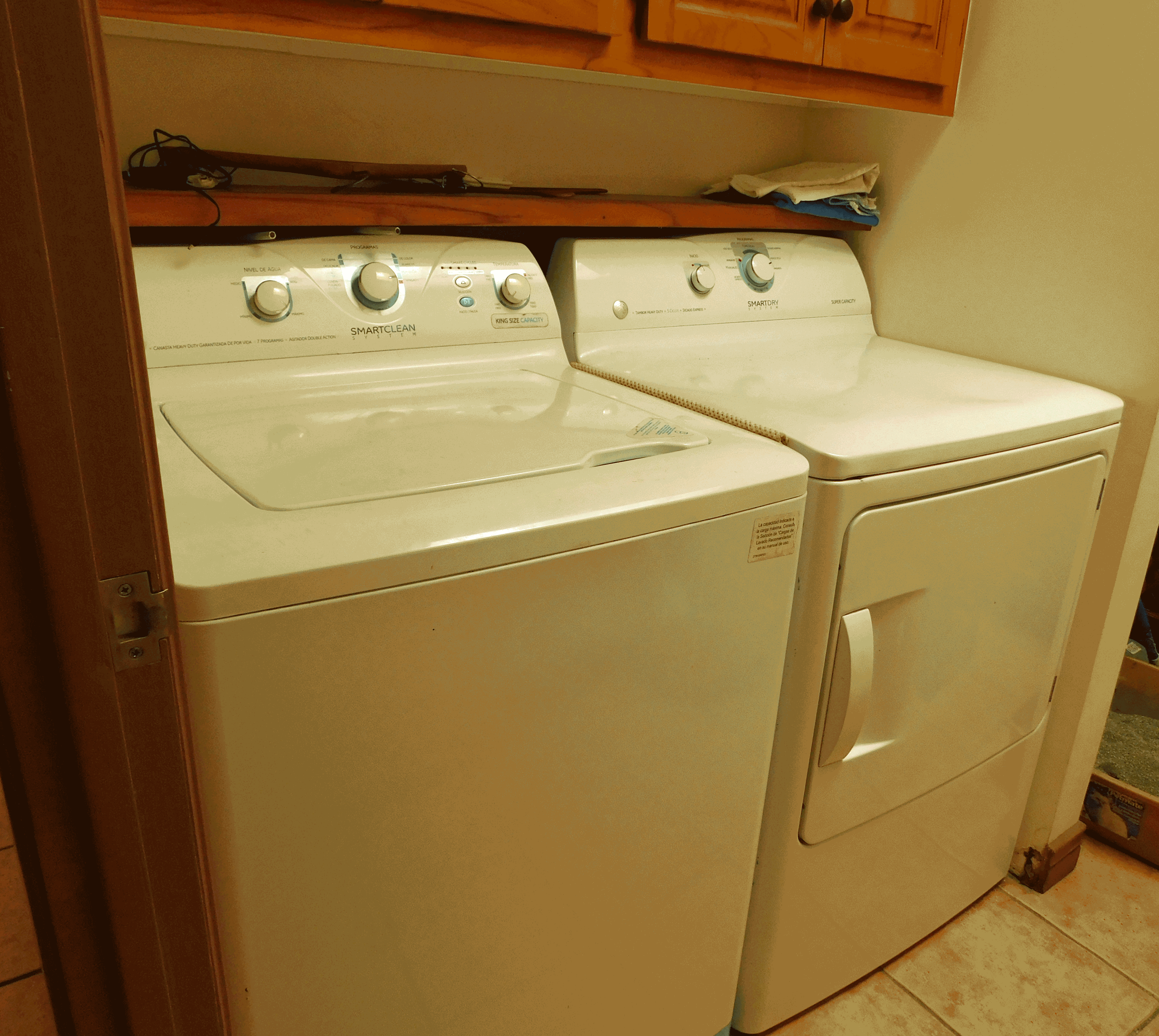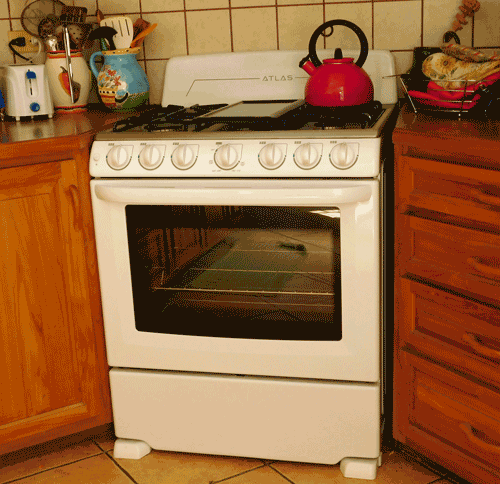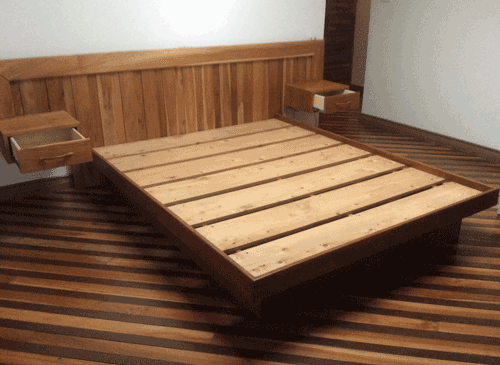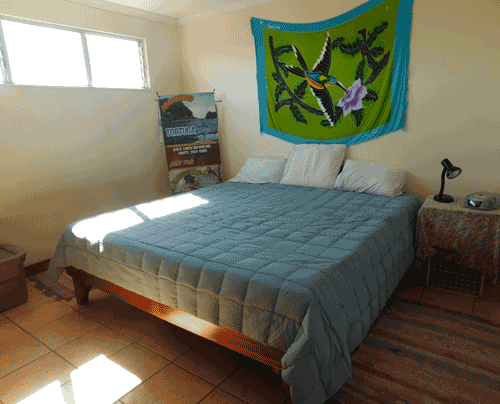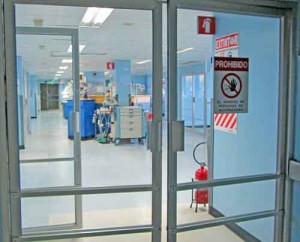Moving to CR, Life in CR
Retire for Less in Costa Rica – February 19, 2017
Welcome to our Retire For Less In Costa Rica Newsletter
In This Issue:
- What’s Up with the Yeatmans? – Moving, Shopping, and Buying
- Our January 2017 Costa Rica Cost of Living
- Paul’s Money-Saving Tip to Live for Less in Costa Rica-Use WhatsApp and Save on Telecommunications Charges
- Our Ultimate CR Healthcare Tour
What’s Up with the Yeatmans? – Moving, Shopping, and Buying
We will tell you all about what everything cost to equip our new unfurnished apartment in downtown San Ramón de Alajuela, Costa Rica in our “cost of living” article, below. But the process of shopping and buying what we needed has been a learning adventure, to say the least.
First of all, when you rent an unfurnished house or apartment in Costa Rica, it is normal for it to not have appliances. This is not what we are used to in the U.S., for sure. But we knew it ahead of time, so we were prepared for the expense. And since we are “Retire for Less,” bargain shopping was important to us.
Buying Used Appliances
We have a dedicated laundry room in the apartment, so during November and December, we looked on Craigslist for a used washer and dryer. We found a used washer in Santo Domingo de Heredia. The former owner was selling it for $250 USD and it appeared to be in good shape. Only problem is that it was pouring down rain the day we wanted to buy it and she wouldn’t hold it until the next day for us. So off we drove in the midst of a downpour, and after dark, to boot. It took us about 2 hours to get there and an hour and a half, at least, to get home. Thank you, dear Paul, for your patience and safe driving!
A week or two later, we found a dryer on Craigslist, this time near Lindora, in Santa Ana. The owner was asking $299 and, since she had had it listed for more than a week, we negotiated down to $275 USD. It was the same brand (General Electric) as the washer, and the two side-by-side look like a matched set (not mandatory, but certainly nice to have).
Once again, it took a while to drive there, test and pick up the dryer, and bring it back to store in the garage at our new apartment.
Buying New Appliances
When it came to buying a refrigerator and stove, it was important to us to get a warranty, so we decided to buy new. Plus, our appliance repairman advised us against buying used Costa Rican appliances. Those originally sold in the States are more durable, in his experience, so used imported appliances would be fine.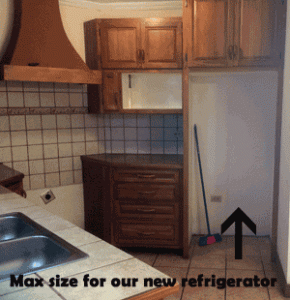
We went to every appliance store in San Ramón and in Palmares, the next town over. Since we had a size limitation on the refrigerator, we wanted the largest fridge available for the space. We wanted white, not gray or chrome, as seems to be the fashion now. And we wanted it before our move-in date of January 1st.
For the fridge, we decided on a Frigidaire that fit all of our requirements. Since I cook a lot from scratch, I would have loved a larger fridge. But one of the good things about living right in town is that we have a couple of grocery stores within a couple of blocks, so I don’t need to keep it as stocked as in the past.
As for the stove, we ended up buying an Atlas 6-burner stove. When we lived at the Cabinas, we had bought a similar stove, third-hand, from friends. Later, when we moved to the Magallanes house (which was fully equipped with appliances and furniture), we sold it to friends. Now, more than four years later it’s still going strong. That was enough for us, so we chose an Atlas. I must admit, it’s not anywhere near as heavy as stoves available in the States, but it works well.
There were two negatives that I realized about the stove after we had it delivered. First was that there was no oven thermometer, so I had no way of knowing when, or if, the oven temperature reached what I wanted. After 4 years using a stove from the U.S., I had forgotten this limitation of local ovens. You wouldn’t think think this would be a problem — you just go to your local Bed Bath & Beyond or Ikea and pick up an oven thermometer, right? Problem is that those store do not exist in Costa Rica.  After checking every store in our town that sells kitchen stuff, we moved on to Cemaco, a large housewares store in the new Alajuela City Mall. A friend said he thought he saw one there. But no, they had every other type of cooking thermometer, but not an oven thermometer. About a week later, another friend posted that she visited a Tips store in San Jose and they had everything. Tips carries products for both professional and home cooks. A great day for me is spending an hour wandering around stores like this. After finding that they had a smaller store in Alajuela, we stopped by yesterday and found that, yes, they knew what I was talking about and had two in stock to choose from. What joy! This was an reminder to me of two things. First, that sometimes the simple things in life can bring the most joy, and second, that success is even sweeter when you have to work for it a bit.
After checking every store in our town that sells kitchen stuff, we moved on to Cemaco, a large housewares store in the new Alajuela City Mall. A friend said he thought he saw one there. But no, they had every other type of cooking thermometer, but not an oven thermometer. About a week later, another friend posted that she visited a Tips store in San Jose and they had everything. Tips carries products for both professional and home cooks. A great day for me is spending an hour wandering around stores like this. After finding that they had a smaller store in Alajuela, we stopped by yesterday and found that, yes, they knew what I was talking about and had two in stock to choose from. What joy! This was an reminder to me of two things. First, that sometimes the simple things in life can bring the most joy, and second, that success is even sweeter when you have to work for it a bit.
The second negative about the stove is that it didn’t have an oven light. This problem was more easily solved — I spent 500 colones (less than $1) on a small flashlight to keep by the stove for when I need an oven light. Easy peasy.
I also wanted a gas, versus electric, stove. Gas is less expensive and it’s also better to cook with as it gives you more control over the cooking temperature. Problem was that the apartment was set up for electric and our landlady was hesitant to allow us to install a gas propane tank.  However, after she talked to someone at the fire department and they assured her that it was safe as long as properly installed, she allowed it. She told us who she wanted us to use (“Doctor Gas,” located just outside the town of San Ramon on the Pan-American Highway), we had them install the gas line into the linen closet located behind the wall where the stove is located. We purchased a brand new propane tank, and when we get refills, we will also get them in new tanks. The cost for installation, parts, and a new tank full of gas was $127.50 (70,000 colones). We anticipate that a tank of gas will last us about three months, but we will report back on that, as well as the price for propane refills.
However, after she talked to someone at the fire department and they assured her that it was safe as long as properly installed, she allowed it. She told us who she wanted us to use (“Doctor Gas,” located just outside the town of San Ramon on the Pan-American Highway), we had them install the gas line into the linen closet located behind the wall where the stove is located. We purchased a brand new propane tank, and when we get refills, we will also get them in new tanks. The cost for installation, parts, and a new tank full of gas was $127.50 (70,000 colones). We anticipate that a tank of gas will last us about three months, but we will report back on that, as well as the price for propane refills.
Buying Furniture
We were lucky in that our new apartment has lots of built-in storage, cabinets, and even a built-in bed frame with side tables in the master bedroom. So that limited what we would need to buy for our bedroom to a mattress.
I remember when I was a kid, my bed had wood slats and my parents put a mattress on top. I don’t remember box springs back then. That’s how it is here. You buy or build a bed, add slats or other support, and top with a mattress. It’s far less expensive than buying a mattress and box spring set, and, from what I can see, more comfortable. We went to a mattress factory right here in San Ramón and purchased a queen-size, top of the line, pillow-top, orthopedic mattress that was 13 inches high, very comfortable, didn’t sag in the middle or on the edges when you sit down on it, and came with a 15 year guarantee. Cost: $358.84 (197,024.64 colones including tax and free delivery).
Our guest room, while it had a built-in dresser and closets, did not have a built-in bed. We posted in a local Facebook group that we were in the market for a bed and mattress, and friends, who are selling their house and moving back to the States, offered us their guest room bed. It was a beautiful king size bed frame built of guanacaste wood, topped with a Tempurpedic mattress. The room was big enough for a king bed, the price was right, only $200, but the guest room was on the 2nd floor. Would it fit up the stairs? We measured and took a chance.
We hired a local guy with a truck to pick it up and deliver it. They tried every which way to get it upstairs but finally gave up and stored it in the garage below our apartment. The next day, we got in touch with a Tico who builds furniture, thinking it might even be the guy who built the bed. He came by with his tools, spent about 4 hours taking the bed apart (he had to cut that beautiful wood in two places), bringing everything upstairs to the guest room, putting the bed frame back together in a sturdy fashion, and then reassembled the bed. Paul asked him what we owed him and he said 12,000 colones (less than $24). He had worked so hard that Paul gave him 15,000 colones instead. With a bedspread on top, you can’t tell that the wood had been cut and it looks great. Plus, it’s incredibly comfortable.
We still need a bedside table, but basically, our guest room is open for visitors!
 The kitchen was another area for which we needed furniture. Since there is a built-in breakfast bar, we started off buying two bar stools so we had someplace to eat our meals. We bought them at Pequeño Mundo, a Costa Rican chain of discount retail stores. They had to be assembled and we found that the screws provided to attach the chair backs were not long enough. So Paul went to the hardware store to buy longer screws. In Costa Rica, you can buy screws, nails, and other small stuff by the piece, so he was able to get just the number we needed, costing 1,860 colones ($3.40). The chairs turned out fine, though the backs still wobble a bit.
The kitchen was another area for which we needed furniture. Since there is a built-in breakfast bar, we started off buying two bar stools so we had someplace to eat our meals. We bought them at Pequeño Mundo, a Costa Rican chain of discount retail stores. They had to be assembled and we found that the screws provided to attach the chair backs were not long enough. So Paul went to the hardware store to buy longer screws. In Costa Rica, you can buy screws, nails, and other small stuff by the piece, so he was able to get just the number we needed, costing 1,860 colones ($3.40). The chairs turned out fine, though the backs still wobble a bit.
Buying a kitchen/dining room table and chairs was even more challenging. We didn’t want formal dining room furniture, we didn’t want dark wood, and we didn’t want to spend a lot. We wanted something that would be bright, comfortable, the right size for the space we had, and, if possible, a little but funky. You know, something different and fun. So, we ended up having something custom made. We’ve paid a deposit and it should be another week or so before it’s delivered. We’ll show you pictures and give you the cost in our next newsletter.
Our only other furniture purchase, so far, was a china cabinet. China? Why do you need china in Costa Rica, you may ask? Yes, I know. With the hard tile floors and the tendency to dine casually, something like Corelle would make more sense. However, there is a story here. When we moved from our home in Baltimore, eight years ago, we got rid of a lot of stuff. But I wasn’t ready to give up our wedding china and crystal (we’d only been married a little over five years), nor my mother’s and Paul’s mother’s china. So I packed it all in four large boxes and there it sat in the basement of our house for five years, until we sold our house in 2014. At that point, we shipped the four boxes, along with nine other boxes of belongings, to Costa Rica. We unpacked everything else, but the china and crystal stayed in their boxes. When we moved to this apartment and finally had room for a china closet, I was determined to buy one and unpack everything.
When we were out shopping for a table and chairs, we found just the perfect cabinet for 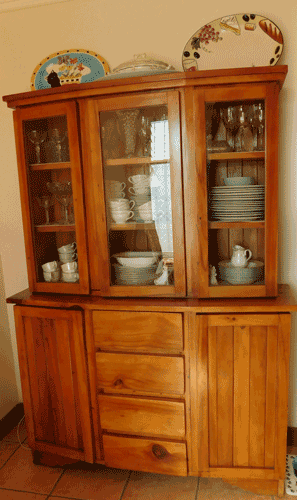 us. It is made of solid wood, matches the teak cabinets in the kitchen, and has plenty of room for everything. The price was only 90,000 colones (about $164) and included free delivery. We bought it from Felipe Ulate who has a used hardwood furniture business, Muebles Ulate, in San Ramon. He delivered it the same day. We would definitely buy from him again.
us. It is made of solid wood, matches the teak cabinets in the kitchen, and has plenty of room for everything. The price was only 90,000 colones (about $164) and included free delivery. We bought it from Felipe Ulate who has a used hardwood furniture business, Muebles Ulate, in San Ramon. He delivered it the same day. We would definitely buy from him again.
The best thing about this purchase is that it has brought us so much enjoyment. We sit at our breakfast bar and eat some of our dinners on Paul’s mother’s china. Sometimes we use my mother’s china, especially when I cook Italian food. And I look forward to having our first dinner party after our new table and chairs are delivered, and serving our friends on our wedding china. I’m not going to leave it sitting in the cabinet. I’m going to use it, and every time I do, it will bring back wonderful memories.
We are still shopping for living room furniture, so more on that, hopefully, next month. I do want to share an experience we had while trying to find a particular furniture factory in Palmares. I’ve written about it below:
Con Mucho Gusto
The kindness of Ticos never ceases to amaze me, but perhaps it should. They just keep proving to us over and over again how willing they are to help.
Paul and I were driving in Palmares the other day, looking for a furniture factory to check out their sofas, tables, and chairs for our new apartment. We found what we thought was the right neighborhood but couldn’t find the street or the factory.
We saw a truck full of workers pulled over on the side of the road and we asked if they could direct us. “No,” one of them said. “We’re from Puntarenas and don’t know the area, but can you wait a minute?” He called someone on his cell phone and asked for directions for us. Meanwhile, one of the other workers pulled up a map application on his cellphone to try to locate the business for us. Next thing we know, they jump in their truck and told us to follow them. They led us out of the neighborhood we were in, across the highway, and through some windy roads, stopping twice to ask directions from people on the street.
The whole time, sitting in our car, I was marveling to Paul, “I can’t believe they’re doing this for us.” Within a few minutes, we found ourselves in front of the furniture factory. They gave us a thumbs up, which we returned with applause as our thanks, and they continued on their way. Had we been able to give them a verbal thank you, I’m positive they would have replied with, “Con mucho gusto,” (with much pleasure), which is the Tico way.
This is not the first time this has happened to us. There are other instances when Ticos went out of their way, literally, to help us get to our destination. And truly, they do it “with much pleasure.” This is just one of the many reasons we love living in Costa Rica.”
There were lots more purchases, which we will break out in our Cost of Living article, but this is the big stuff. I have to admit, I will be happy when we’ve gotten the shopping and buying part out of the way and can get down to just living!
Related Articles:
Our January 2017 Costa Rica Cost of Living – Moving and Buying Furniture and Appliances
January was our biggest spending month ever! We moved to our new unfurnished apartment on January 1st and, though we actually purchased some items in November and December of 2017, we elected to show the expenses in January so that our 2017 annual expenses will include all move-related spending.
$4,931.37 is a lot of money to spend, especially in one month. But if you take out all of the one-time expenses (furniture, appliances, household, hardware, and moving costs), our monthly living expenses for January are actually reduced to $1,945.52. And that includes the increased grocery spending to restock our pantry. So, all in all, we are pleased with what we spent.
You will see a new category in the graphic to the right, “Furniture & Appliances for Apartment.” Eventually, this will get rolled into “Household” but, for now, we wanted to show you how these items break out.
You can read more about our purchases and see additional photos in our article, “What’s Up with the Yeatmans? – Moving, Shopping, and Buying”
Appliances:
- Used General Electric Smart Clean Large Capacity Washer: $250.00
- Used General Electric Smart Dry Large Capacity Dryer: $275.00
- New Atlas 6-burner gas stove: $347.89 (169,017 colones + 13% tax)
- New Frigidaire refrigerator: $613.85 (298,234 colones + 13% tax)
- Extended warranty (+24 months) on refrigerator: $163.92 (89,998 colones)
- New Whirlpool microwave: $54.62 (26,539 colones +13% tax)
- New Durabrand 18″ high velocity stand fan: $31.51 (17,300 colones)
- New Proctor Silex 12-cup coffee maker: $23.15 (12,710 colones)
- New 2-slice toaster: $16.45 (9,030 colones)
For those of you who know the saga of our old toaster, the one I didn’t want to get rid of just because the lever to put the toast down no longer stayed down without a folded piece of cardboard to hold it, nor popped up when done, we finally retired it and got a new one!
Furniture:
- Queen-size, pillow-top, orthopedic mattress: $358.84 (197,024.64 colones including tax)
- (2) Bar stools: $67.83
- King bed frame & mattress (used): $200 + $27.32 (15,000 colones) to have it disassembled and reassembled
- China cabinet: $163.93 (90,000 colones)
Rent, Phone, & Utilities – $935.58
In January, we actually paid some bills due on our past rental (electricity and water), plus rent and utilities on our new apartment. Here’s the breakdown:
Magallanes House expenses:
- Water bill for our usage in December: $12.93
- Electricity bill for our usage in December: $$77.61
San Ramon Apartment Expenses:
- Rent: $550
-
Tigo offices in San Ramón
Propane: New tank (for use with gas stove), plus parts and installation: $127.50 (70,000 colones)
- Internet: $9.11 deposit + $31.61. Tigo, a local company offering cable television and Internet, was running a free installation promotion. All we had to pay in advance was a 5,000 colones deposit to set it up. The deposit was later deducted from our first month’s bill.
- Phone: $61.23. This includes both of our cell phones and our Vonage line.
- Housecleaning: $65.57. Our housekeeper came on four days and worked for four hours each time.
Other Household/Hardware – $309.55
- Curtain rod, dish drainer, plastic holder for flatware, 6 glasses, plastic dishes: $47.487
- Magnetic screen door (ordered from Amazon.com and brought down by a friend: $20.00
- Duplicate apartment keys, soap dishes, can opener, 4 small trashcans: $22.13
- Step stool: $44.80 (23,003 colones)
- Dryer exhaust hose, super glue, washers to connect washing machine, battery: $5.57
- Kitchen trash can, storage baskets, mop, soap dishes, 2 pillows, small trash can: $31.13
- Longer screws for bar stools: $3.39
- (2) large flower pots, potting soil, gravel, labor to divide and re-pot large plant: $31.88 (17,500 colones)
- Picture hanging hooks, foam sheets to use for shelf liners: $7.61
- Lots of miscellaneous stuff from Pequeño Mundo, including a small step-stool, light bulbs, pillows, doormat, bathmat, and more: $46.68
- Curtains for living room window: $30.60
- Digital kitchen timer (from Cemaco in City Mall) and picture hanging hooks & ceiling hooks (from EPA): $18.29
Moving Expenses – $81.97
As I mentioned in our previous newsletter, as I packed boxes during the month of December, we loaded them in the car and Paul took them to our new apartment where we stored them in the 1st floor garage. Problem was that on January 1st, we needed to get everything up to the 2nd and 3rd floor living space. We are thankful that two younger, stronger, friends helped us. They didn’t expect payment but we gave them each 10,000 colones as a thank you. It took them less than two hours of hard work to carry everything upstairs for us. Thank you again Dominic and Arturo!
The only other moving expense we had was to pay two guys in a truck to pick up our new used bed in Magallanes and bring it to our apartment in town. We got recommendations on folks who provide this service from friends in town who owned a used furniture business. Problem was the bed was too big to get up the stairs, though they did try. As I mentioned above, we ended up hiring someone to take it apart and put it back together again a day or two later.
Groceries – $491.09
When you are getting ready to move, as we were in December, you want to let things run out. You avoid stocking up or replacing products because that means there’s less to pack and move. So when January rolled around, it was time to restock our pantry, fridge, and freezer. The only big expense was a trip to PriceSmart that cost us about $120.
One thing I will mention about grocery shopping while living in town, it’s so easy to walk a couple of blocks to a grocery store whenever I am planning dinner or run out of something. So, it’s more frequent visits to the grocery stores and (usually) smaller loads since some of the time we’re on foot. I kind of like it, especially having a “mini-super” on one corner and a macrobiotica (health food store) on the other!
Transportation – $239.53
For 2017, I started breaking out our transportation spending into three sub-categories:
- Public transportation: taxi, bus, shuttles, etc.
- Gas, tolls, & parking
- Car repair & maintenance
In future months, I will be writing more about the breakdown. Since we are now living in town and using the car a lot less, we expect the public transportation costs to go up and the car-related expenses to go down. Right now we’re still driving quite a bit as we’re out shopping for furniture and other stuff for the apartment. As I have mentioned before, there is no such thing as “one stop shopping” in Costa Rica. Everything takes longer, especially when you are looking for something specific.
The only spending of note in this category in January was $63.75 to have our car’s brakes checked and to replace the oil seal.
Healthcare – $234.03
Of our January healthcare expenses, only $23.67 was for pharmacy or supplements. The rest went towards medical care. And the bulk of that was due to our visits with an orthopedic surgeon. Paul has been having problems with his knee for years now, and I had been having some bone pain in my ankle. We each had an appointment with one of the ortho doctors at Hospital Metropolitano, through our MediSmart plan. We received a 40% discount off the office visit, so we each paid 18,000 colones instead of 45,000 (about $33 each). I also had x-rays done on both of my ankles for 45,000 colones (about $82) instead of the normal in the same building and receive a 40% discount off the 75,000 colones regular price. Our MediSmart membership has already more than paid for itself and we have been very pleased with the doctors we have seen.
As usual, to help put things into perspective, here are our expenses for the previous two months. If you want more information about a particular month, just click on the graphic for that month below:
Paul’s Money-Saving Tip to Live for Less in Costa Rica-Use WhatsApp and Save on Telecommunications Charges
What is WhatsApp?
It’s a voice-over-internet (VOIP) service, but certainly not the only one. There are many others, including Viber, Facebook Messenger, Skype, Google Voice, MagicJack, Vonage, Facetime (with iPhone and iPad), and others. To take advantage of VOIP services on your phone, you will need a smartphone such as Samsung, Huawei, or iPhone.
When buying a smart phone, the biggest player in Latin America is Samsung, followed by the big newcomer, Huawei (“the best smart phone you’ve never heard of”), and, of course, iPhones are also popular. With all of the smart phones, you can download WhatsApp for free.
So why WhatsApp and not one of the others? Because it seems almost everyone in Latin America has it and uses it — kids, parents, everyone. For some reason, few people in the U.S. have WhatsApp. Most haven’t even heard of it. The fact that almost everyone with a smart phone in Latin America has WhatsApp makes it a must.
To place a call on WhatsApp, both you and the person you are calling must download the free app. Once you install it, you can refresh your contacts in Whatsapp and anyone in your phone contacts who already has the app will appear in your WhatsApp contact list. For anyone else, you can invite your friends and family to download and use Whatsapp so you can call each other for free.
What can you do with WhatsApp?
Here’s the breakdown from WhatApp’s webpage:
- Send texts: “Message your friends and family for free*. WhatsApp uses your phone’s Internet connection to send messages so you can avoid SMS fees.”
- Take part in group chats: “Keep in touch with the groups of people that matter the most, like your family or coworkers. With group chats, you can share messages, photos, and videos with up to 256 people at once. You can also name your group, mute or customize notifications, and more.”
- Make voice and video calls: “With voice calls, you can talk to your friends and family for free*, even if they’re in another country. And with free* video calls, you can have face-to-face conversations for when voice or text just isn’t enough. WhatsApp voice and video calls use your phone’s Internet connection, instead of your cell plan’s voice minutes, so you don’t have to worry about expensive calling charges.”
- Send photos and videos: “Send photos and videos on WhatsApp instantly. You can even capture the moments that matter to you most with a built-in camera. With WhatsApp, photos and videos send quickly even if you’re on a slow connection.”
- Share documents: “Send PDFs, documents, spreadsheets, slideshows and more, without the hassle of email or file sharing apps. You can send documents up to 100 MB, so it’s easy to get what you need over to who you want.”
- Leave a voice message: “Sometimes, your voice says it all. With just one tap you can record a Voice Message, perfect for a quick hello or a longer story.”
- “And with WhatsApp on the web and desktop, you can seamlessly sync all of your chats to your computer so that you can chat on whatever device is most convenient for you. Download the desktop app or visit web.whatsapp.com to get started.”
* Data charges may apply. Contact your provider for details.
But why use WhatsApp at all?
Here’s where the money-saving tip comes in. WhatsApp is free for texting, voice, video-chat or any of its other uses. And I have found the sound quality to usually be very good, often better than when I use my Kolbi phone plan. I’ve used Viber at times to call the States, and the quality is never as good as with WhatsApp, yet both are VOIP services. Once I started using WhatsApp on my Huawei and Samsung phones, our monthly phone bill dropped significantly. Now I can call people all over the world for free, with good quality. All you need is WiFi wherever you are. Naturally, if you have a data plan, you can receive calls or texts, with or without WiFi, but then data charges may apply.
How much can you save?
 It depends on how much you use the phone. My phone bill has been cut by 50%, just by using WhatsApp for phone and texting. So, what’s our monthly telecommunications bill?
It depends on how much you use the phone. My phone bill has been cut by 50%, just by using WhatsApp for phone and texting. So, what’s our monthly telecommunications bill?
- Vonage: About $18/month. Vonage allowed us to keep our Baltimore phone number and make free calls to the U.S., Canada, and Mexico.
- Paul’s Kolbi phoneplan: Average cost as been $11.50/month
- Gloria’s pay-as-you-go pre-paid Kolbi plan: Less than $5 per month
Prior to using WhatsApp, my Kolbi monthly phone plan cost about $25 on average. After starting to use WhatsApp regularly, it dropped to about $7-$15 per month. It will be interesting to see how our monthly phone expenses shake out over the next several months. I switched my post-paid Kolbi plan to a pay-as-you-go pre-paid chip. The ICE rep thought it would be even more economical for me.
Both Gloria and I exchanged our old SIM cards for the new 4G USIM cards. These give us limited Internet access through the 4G network. This works well for us since we only use it to check email and to get real-time traffic reports using the Waze app. If we want, we can probably also use it for WhatsApp, though we haven’t tried that yet. We do not pay extra for a data plan. We weren’t sure if there would be a cost for using the Internet, but so far, there doesn’t appear to be any affect on our pre-paid balance when we use the Internet, only when we actually use the Kolbi phone service for making a phone call. We will let you know if this changes as time goes on.
Related Articles:
- Paul’s Monthly Tip to Live for Less in Costa Rica: Sign Up for Skype, Vonage, or Magicjack
- Paul’s Monthly Tip to Live for Less in Costa Rica: Save on Telephone Service
- Read all of Paul’s Money-Saving tips at this link: https://retireforlessincostarica.com/tag/moneysavingtips/
![]()
Our Ultimate CR Healthcare Tour
We are proud to offer the Ultimate Healthcare Tour of Costa Rica. When asked what he liked best about our healthcare tour, one of our guests wrote, “the wide variety of places we saw, the experts that Paul  arranged for us to meet and talk with, and an emphasis on all aspects of health, not just doctors and hospitals. Mental health is just as important as physical, if not more so.”
arranged for us to meet and talk with, and an emphasis on all aspects of health, not just doctors and hospitals. Mental health is just as important as physical, if not more so.”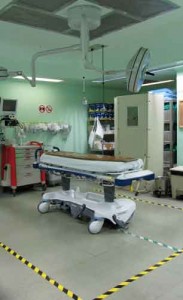
We’ve lived in Costa Rica for over seven years and have used the Caja, Costa Rica’s public healthcare system extensively, as well as the private system, when needed. We’ve learned the system and have been referred up the ladder to see specialists in the maze that is the Caja system. Gloria’s even had surgery here.
Our blend of personal insights and on-the-ground experience combines to answer your questions about whether or not Costa Rica’s healthcare system could meet your individual needs.
But, while it is focused on healthcare, you will learn a lot more about living and retiring in Costa Rica’s Central Valley. Most of the second day of the tour takes place in the town of San Ramón where we live and use the services. And you will come to our home for lunch that day to listen to two presentations.
Our tour is designed to save you both time and money, packing a lot of information into a short period of time. Our goal is to show you the possibilities and to try to demystify Costa Rica’s healthcare system. Our tour lasts two days and 1 night and includes lodging, transportation, meals and non-alcoholic beverages.
Sample Itinerary
You’ll visit:
- At least two private hospitals in San Jose area
- Hospital Mexico, the largest and best public hospital (they even do open heart surgeries there)
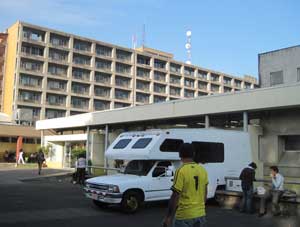
- An insurance broker for a presentation on the various supplemental health insurance options, including public, private, and international plans
- A senior living retirement community
- CPI language school for a presentation about how learning Spanish increases your options for healthcare and some basic medical Spanish.
- Our local hospital here in San Ramón
- A local EBAIS (community clinic)
- The office of our dentist in San Ramón
- A local Seguro Social office where you would sign up for the Caja (national healthcare coverage)
- A pharmacy
- A local feria (farmer’s market) where you will see the abundance of fresh food available.
- The local Cruz Roja (Red Cross) to learn about their services and programs.
- A health food store (macrobiotica), and more!
You’ll learn:
- If the Costa Rican healthcare system could meet your needs and put your mind to rest, once and for all, about this sensitive subject.
- About the public system and how it works, about the private healthcare system, and how you can use a combination of both to your advantage.
- About the EBAIS – where healthcare starts in Costa Rica.
- Approximately how much you would pay for Caja.
- About medical tourism in Costa Rica.
- About home health care in Costa Rica.
Prices: $650 for a couple, $550 for a single.
Please contact us if you are interested in booking a tour. Space is limited.
Related Articles:
- Paul Gets a CAT Scan Through the Caja
- Integration 102 – Speaking Up at the Hospital
- Waiting to See the Doctor, by Jo Stuart
 Facebook, Twitter, & YouTube
Facebook, Twitter, & YouTube
![]()
![]()
![]() You can now follow us on Facebook and Twitter, so please “like” us on Facebook, “follow” us on Twitter, and watch and share our videos on YouTube.
You can now follow us on Facebook and Twitter, so please “like” us on Facebook, “follow” us on Twitter, and watch and share our videos on YouTube.
 What’s New on the Website
What’s New on the Website
Check out our newest posts on www.retireforlessincostarica.com:
- What’s Up with the Yeatmans-January 23. 2017
- Our November and December 2016 Costa Rica Cost of Living
- In the Mailbag-A Reader’s Experience with Medismart-January 2017
- What it Cost Us to Spend a Month Traveling in Mexico-Part 1: Transportation
- What it Cost Us to Spend a Month Traveling in Mexico-Part 2: Hotels
- What it Cost Us to Spend a Month Traveling in Mexico-Part 3: Food, Marvelous Food
- What it Cost Us to Spend a Month Traveling in Mexico-Part 4: Entertainment & Tours
- What it Cost Us to Spend a Month Traveling in Mexico-Part 5: Everything Else
- What’s Up with the Yeatmans-November 2016
- Our 2015 Annual Cost of Living in Costa Rica Summary



